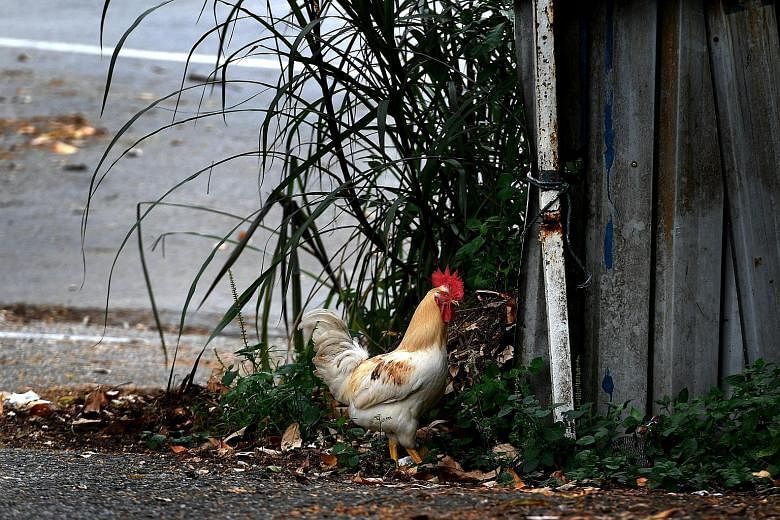Mass culling of animals to prevent the spread of disease is a common practice around the world.
But its effectiveness is debatable, says a group of researchers here.
Disease could spread as animals move away from the areas where culling is taking place, say the scientists from the National University of Singapore (NUS), citing scientific studies that demonstrate this.
Instead, public health policies should take into account the health of both human and animal populations, through means like vaccinating the animals instead of culling them, for example.
The recent backlash against the Agri-Food and Veterinary Authority's (AVA) move to cull free-ranging chickens here over bird flu concerns has also shown that culling incites an emotional response.
The scientists from NUS pointed out that healthy animals should not be culled as a way of managing zoonotic diseases, or diseases that can be transmitted between humans and animals. This strategy does not consider the impact culling has on ecosystems already threatened by urbanisation.
"Current policies to manage diseases that can be transmitted from animals to humans have prioritised human health," said Assistant Professor Tamra Lysaght, the study's lead from the NUS Centre for Biomedical Ethics yesterday.
"But measures such as culling healthy animals do not account for other factors that contribute to the emergence and threat of emerging infectious diseases."
As ecosystems lose biodiversity, she explained, the number of natural animal hosts for diseases is reduced. This can lead to the pathogens looking for other hosts, resulting in the emergence of new zoonotic infectious diseases or more dangerous viruses.
She was speaking about her team's new research paper, which looks at how global public health policies needed to be more aware of both human and animal health.
Published in January in scientific journal Plos One, the paper analysed the responses of 32 panellists from AVA, veterinarians, academics and wildlife conservationists on Singapore's approach to managing zoonotic diseases.
Participants found culling controversial and "extremely difficult to implement effectively within an urbanised area", the study noted. Alternatives, such as the use of animal vaccines, were discussed, but participants said these can be difficult to administer, depending on the animal, the type of virus and drug availability.
No uniform policy option to deal with emerging infectious diseases was given, and this illustrates the need to explore other approaches such as medication, good surveillance and open communication to tackle the issue, said the scientists.
One of the study's authors, NUS infectious diseases expert Paul Tambyah, said that developing surveillance networks will quickly alert the authorities to infections and prevent the spread of diseases, reducing the need for mass culling.
"In Hong Kong, for example, there is a reward system in place for farmers who alert the authorities to cases of bird flu. That has helped Hong Kong keep the virus under control," he said.
Developing a comprehensive ecological approach to healthcare would result in a win-win approach to dealing with zoonotic diseases which will not unfairly tax healthy animal populations, he added.
In response, the AVA said it had a list of notifiable diseases that must be reported upon diagnoses or suspicion, and that it reaches out to veterinarians and farmers on how and when to do so.
"We also educate farmers on the clinical signs to look out for, for key diseases such as avian influenza and foot-and-mouth disease," said an AVA spokesman.
She added that AVA follows international guidelines when it comes to culling. The World Organisation for Animal Health, for instance, recommends the "humane destruction of all infected and exposed animals is recommended if highly pathogenic avian influenza infection is detected", she said.


